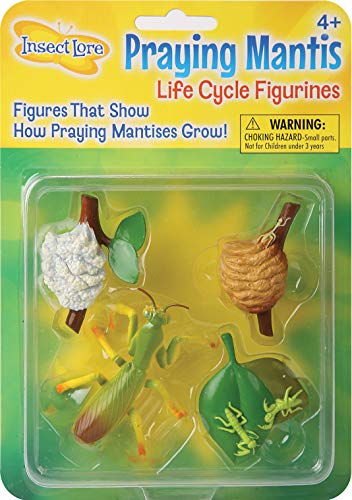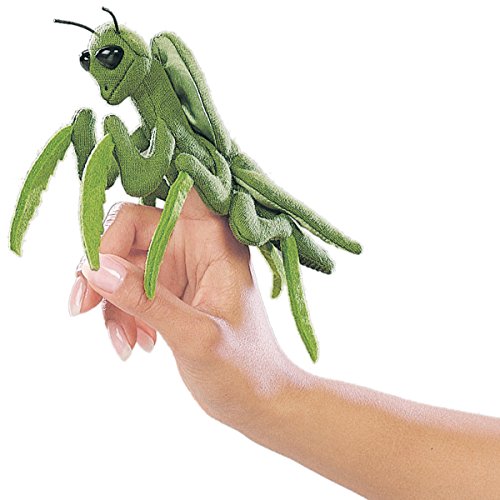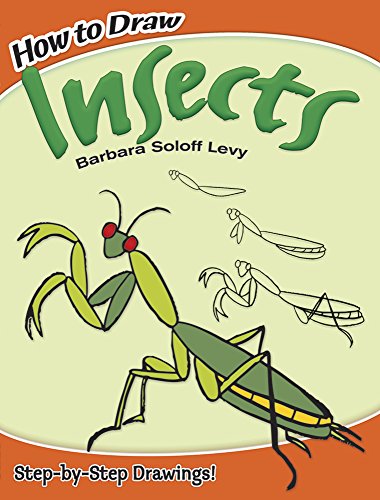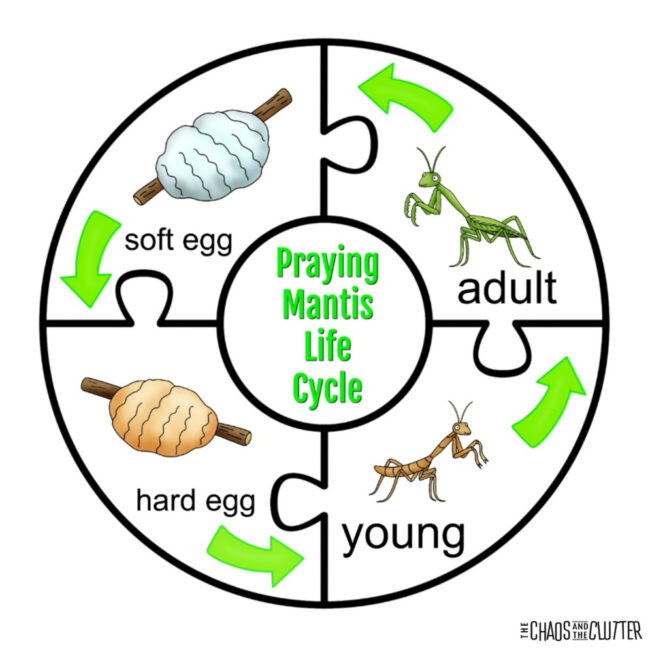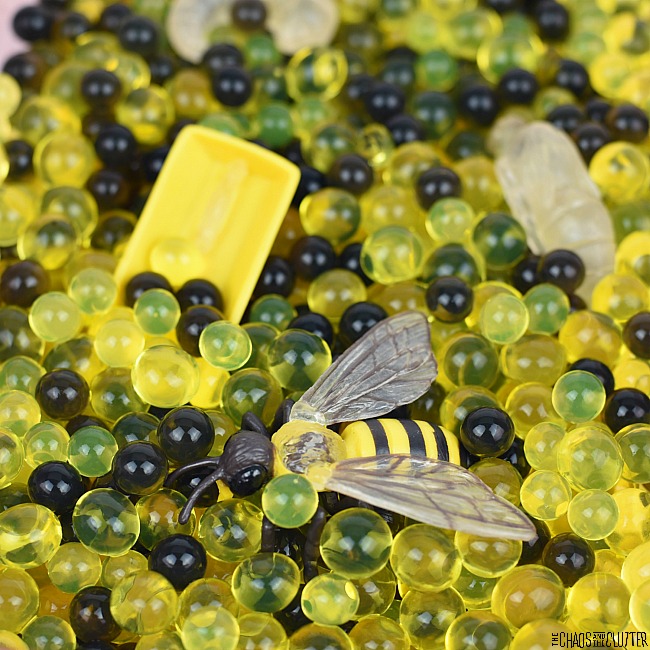Praying Mantis Life Cycle Sensory Bin
Posted by admin on
I find that my kids are always fascinated to learn about different life cycles. One of the ways I like to help them reinforce that learning is through sensory play. This Praying Mantis Life Cycle Sensory Bin allows kids to explore through their senses and imaginations. 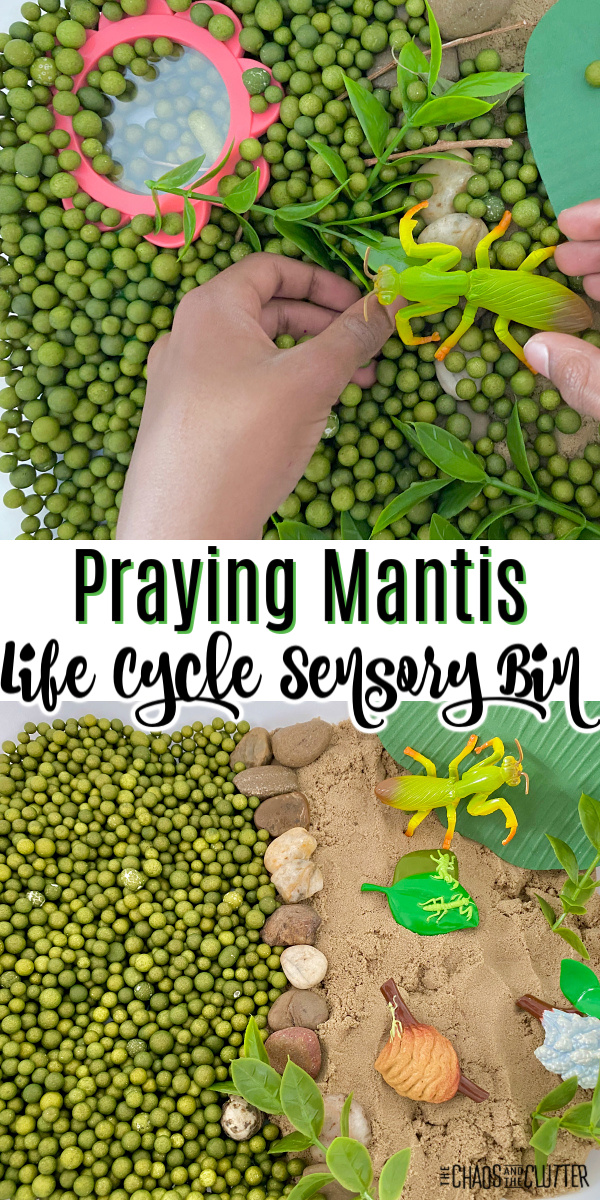 Kids can see how the cycle from soft egg case to hard egg to nymph (young) to adult. The more they learn about this fascinating insect, the more their interest will be piqued.
Kids can see how the cycle from soft egg case to hard egg to nymph (young) to adult. The more they learn about this fascinating insect, the more their interest will be piqued.
Praying Mantis Life Cycle Sensory Bin:
Supplies needed:
- kinetic sand (you can use regular sand if you prefer)
- decorative foam balls in green (I found these at the Dollar Store)
- Praying Mantis Life Cycle Pack
- magnifying glass
- rocks
- various leaves (real or plastic)
- plastic bin
- optional: scoops, spoons, or tongs
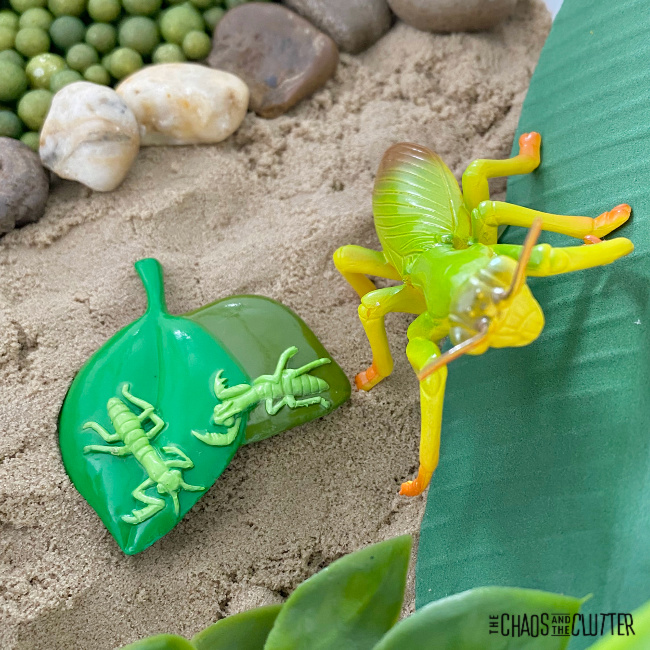 Directions:
Directions:
- Place kinetic sand and foam balls in a plastic tub.
- Add rocks, leaves, a magnifying glass, and the figures from the Praying Mantis pack.
- If you want, you can also add some scoops or tongs.
- Invite your child to play.
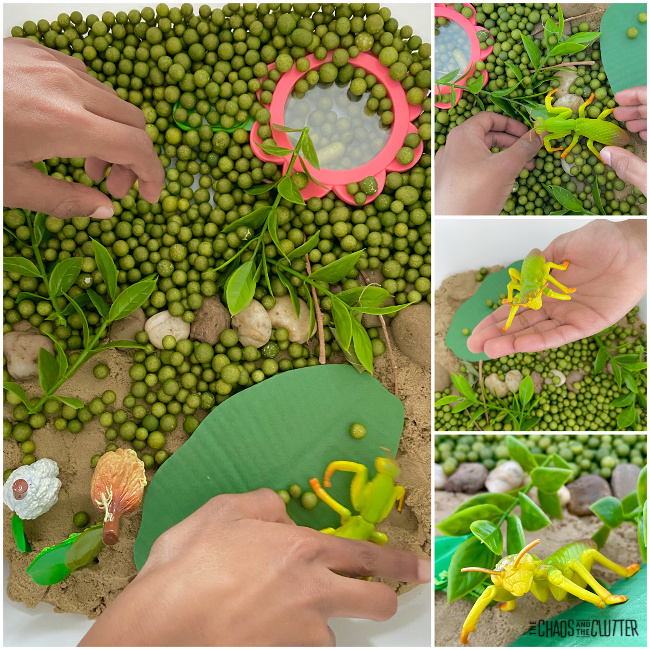
This hands-on activity is a great way for kids to get up close and personal with this type of insect. The way it is set up mimics the habitat for some types of praying mantis.
This activity can be used for science at home or in a preschool or classroom. In addition to learning, students will also be getting visual, tactile, and proprioceptive sensory input as they play.
You can use this sensory bin as part of a unit study on insects or on the praying mantis.
Kids can research their questions such as:
- What does a praying mantis eat?
- How long does a praying mantis live?
- Where do praying mantis live?
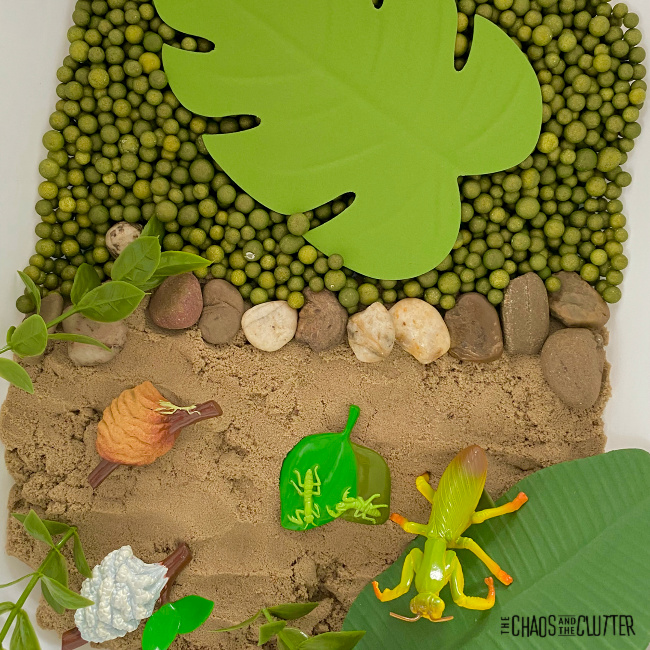
Ways to expand the learning:
- Read books about insects or about the praying mantis in particular.
- If you live in an area where there are praying mantis, you could catch one and place it in a bug habitat to observe before releasing it.
- Write a report complete with pictures about the praying mantis.
- Print off the Praying Mantis Life Cycle puzzle. Cut out the pieces and assemble.
Praying Mantis 4 Piece Life Cycle Figures The Life Cycle of a Praying Mantis
The Life Cycle of a Praying Mantis Mini Praying Mantis Finger Puppet
Mini Praying Mantis Finger Puppet Educational Insights GeoSafari Jr. BugWatch
Educational Insights GeoSafari Jr. BugWatch How to Draw Insects
How to Draw Insects Manuelo, the Playing Mantis
Manuelo, the Playing Mantis Praying Mantises (Animal Cannibals)
Praying Mantises (Animal Cannibals)
Learn more about the praying mantis:
Interesting Facts about the Praying Mantises (great pictures here!)
Nature’s Perfect Predator (Praying Mantis video)
Download your free printable Praying Mantis Life Cycle puzzle to go along with this science activity.
You may also be interested in checking out these Life Cycle Sensory Bins:
Chicken Life Cycle Sensory Bin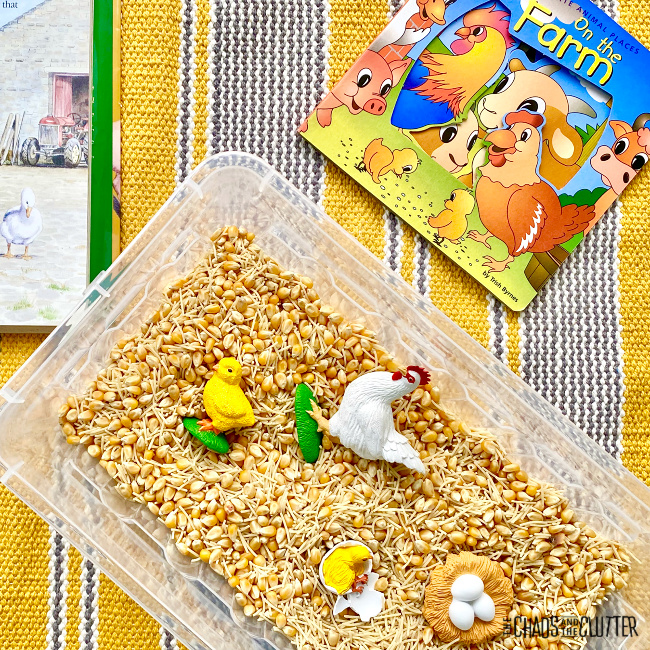
Sea Turtle Life Cycle Sensory Bin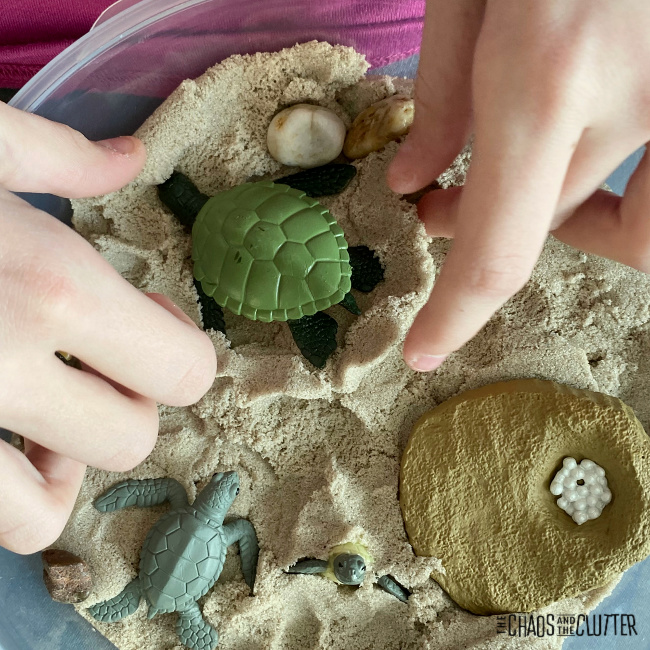
The post Praying Mantis Life Cycle Sensory Bin appeared first on The Chaos and the Clutter.

